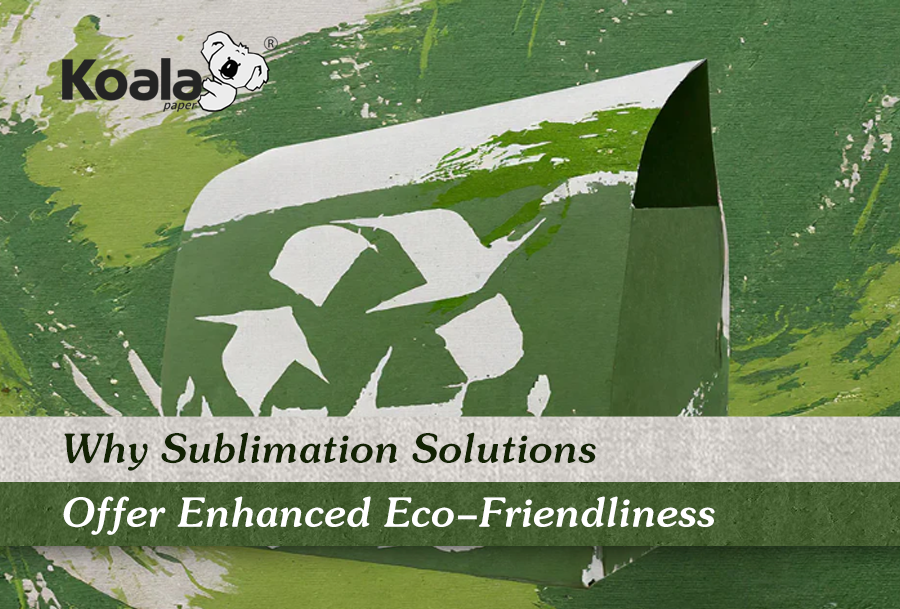In today’s environmentally conscious world, the spotlight is increasingly turning towards sustainable practices in various industries, including printing. This article delves into the eco-friendly aspects of sublimation printing, a method that is rapidly gaining traction due to its significantly reduced environmental impact. By comparing this innovative technique with traditional printing methods, we aim to shed light on the profound benefits it offers in terms of sustainability.
Environmental Impact Comparison

When comparing sublimation printing with traditional techniques such as screen printing and direct-to-garment printing, the significant environmental advantages of sublimation technology become strikingly evident. Sublimation printing emerges as a standout example of eco-friendliness, notably reducing water consumption and effectively minimizing waste generation within the complex landscape of printing processes.
Chemical Usage

In the realm of printing technologies, the significance of chemical usage cannot be overstated. Sublimation printing shines brightly in this domain due to its minimal reliance on chemicals and the utilization of non-toxic inks. Unlike traditional printing methods that often involve a cocktail of harmful substances, sublimation’s eco-friendly approach prioritizes the use of inks that are not only safe for the environment but also for those handling them.
The non-toxic nature of the inks used in sublimation not only reduces the environmental impact during the printing process but also ensures a healthier working environment for those involved in the production cycle. This contrasts starkly with conventional printing techniques that pose risks to both human health and the environment due to their heavy reliance on potentially hazardous chemicals. Sublimation printing’s commitment to minimizing chemical usage exemplifies its dedication to eco-friendliness and sets a standard for greener printing practices across the industry.
Energy Efficiency

Within the realm of printing technologies, the efficiency of energy utilization plays a pivotal role in determining the environmental impact of the process. Unlike some conventional printing methods that are notorious for their energy-intensive nature, sublimation printing stands out for its ability to produce high-quality prints with reduced energy consumption. By utilizing heat to transfer dyes onto various substrates, sublimation printing minimizes energy waste, thereby decreasing its carbon footprint. This energy-efficient approach not only benefits the environment by reducing greenhouse gas emissions but also helps in cutting down operational costs for businesses involved in the printing sector.
By embracing energy-efficient technologies like sublimation, businesses can play a significant role in mitigating climate change and working towards a more environmentally conscious future.
Waste Reduction

Efficient waste management is a critical aspect of sustainable manufacturing processes, and sublimation printing excels in this area through its innovative waste reduction strategies.
One of the key advantages of sublimation printing is its precise ink application, which significantly reduces ink wastage compared to traditional printing methods. By ensuring that only the necessary amount of ink is used in the printing process, sublimation minimizes material waste, leading to cost savings and environmental benefits.
Moreover, the use of recyclable sublimation paper further enhances the sustainability of the printing process. By incorporating materials that can be reused or recycled after use, sublimation printing contributes to the circular economy model, where resources are kept in use for as long as possible.
Through these practices, sublimation printing not only enhances efficiency and cost-effectiveness but also minimizes its environmental impact, paving the way for a greener future in the printing industry.
Product Durability and Sustainability

In the realm of printing, product durability and longevity are pivotal factors that contribute significantly to overall sustainability.
Sublimation printing excels not only in producing visually striking products but also in creating items that boast remarkable durability. The unique dye-sublimation process ensures that the ink forms a molecular bond with the substrate, resulting in prints that are exceptionally resistant to fading, cracking, and peeling over time. This superior durability means that sublimation-printed items maintain their vibrant colors and high quality for an extended period, reducing the frequency at which they need to be replaced.
By investing in products that are built to last, consumers can effectively reduce their environmental footprint by decreasing the amount of waste generated from disposable or short-lived goods. The focus on product longevity in sublimation printing not only benefits consumers by providing them with high-quality items but also contributes to a more sustainable and eco-friendly approach to both production and consumption.
In conclusion, the durability and sustainability of products produced through sublimation printing not only enhance consumer satisfaction but also align with broader environmental goals. By prioritizing longevity and quality, sublimation printing sets a standard for eco-conscious practices in the printing industry, offering a pathway towards a more sustainable future for all stakeholders involved.
In a world where environmental considerations are increasingly critical, the emphasis on product durability and sustainability in sublimation printing underscores the importance of adopting such environmentally friendly practices across industries. By championing long-lasting, high-quality products, we can collectively reduce waste, conserve resources, and move towards a more sustainable future for generations to come.
Conclusion
In the quest for sustainable solutions in the printing industry, sublimation printing emerges as a beacon of eco-friendliness with its array of advantages. Throughout this article, we have delved into the environmental benefits of sublimation printing, highlighting its reduced carbon footprint, minimal chemical usage, energy efficiency, waste reduction strategies, and product durability.
By summarizing the eco-friendly advantages of sublimation printing, it becomes evident that this innovative printing method holds immense promise for a greener future. The emphasis on sustainability, durability, and waste reduction inherent in sublimation printing underscores the importance of adopting such practices in the broader printing industry.
As we navigate towards a more environmentally conscious era, the advocacy for the adoption of sustainable practices, exemplified by sublimation printing, becomes increasingly crucial. By embracing eco-friendly technologies and practices, we can pave the way for a greener, more sustainable future in the printing industry and beyond. Let us strive towards a world where innovation and sustainability go hand in hand, creating a better tomorrow for generations to come.
